I think everyone is familiar with the Emperor Angel (Pomacanthus imperator). I’ve often seen them in aquarium shops, and usually as juveniles, so you might imagine they are a common fish. Well, sort of… let me explain.
Juvenile P. imperator are often seen in fish stores and I worry about how many are bought by people with little idea of how large they get and how much room they ought to be given. In the wild, they are a lot harder to find. In fact, I’ve only seen two youngsters in about five hundred dives in locations where the fish are found. Indeed, amongst diving fish fans, spotting a young juvenile is considered a rarity.
The picture above shows the youngest fish I’ve ever seen. It’s from Mauritius. It’s hard to see the scale in this picture, but I’d describe it as ‘very wee’. It’s not the greatest picture, as the fish was hard to approach and spent a lot of time darting back in and out of the reef. I always try to avoid stressing out the fish, so after a few minutes I left it alone. I imagine the survival rate of angels is similar to a lot of reef fish – pretty low. Couple this with their shy nature, and you can see why they’re not seen very often.
My second fish shows a specimen in transition phase. It is starting to gain some yellow on its flanks and those patterns will slowly morph into transverse stripes.
This fish was still wary and I spent a good amount of time shooting it and then backing off whilst it worked out if I was a threat or not.
Adults are much more common than juveniles and I often see one or two (usually solitary) on an average Indo Pacific dive. They are very wary and getting close is tough. You think you’re going to get a good shot just as they turn their tail and scoot away.
This fish, from the Red Sea, was a little easier to approach as it was getting a cleaning treatment and didn’t want to miss out. You can see what appears to be a juvenile Labrodies dimidiatus at o the rear of the angel’s eye. The shot below is a non-cropped version of the one above.

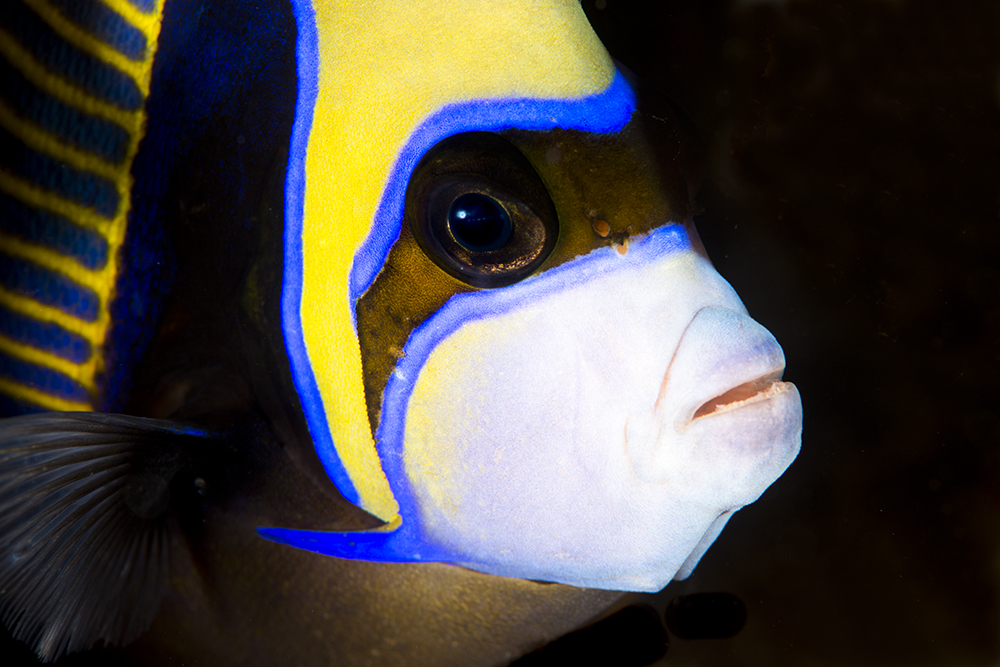
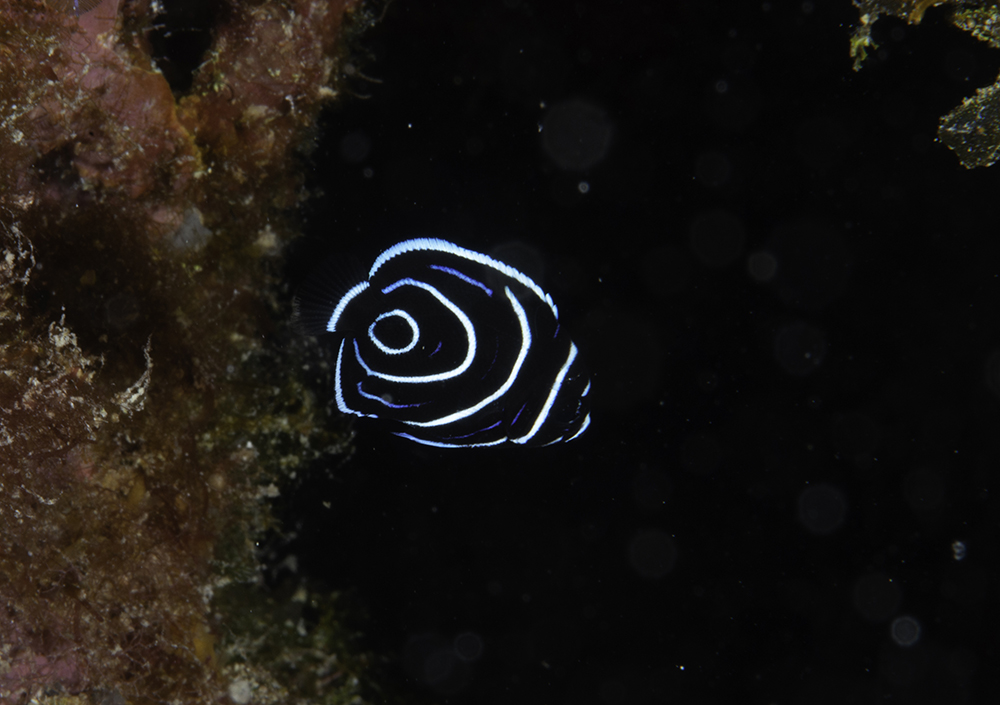
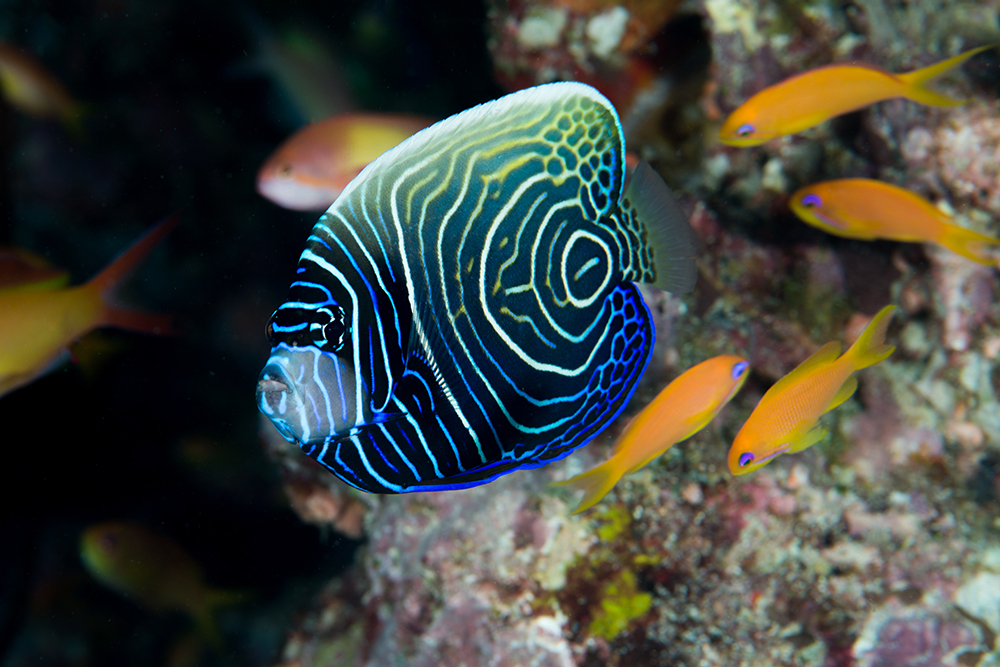
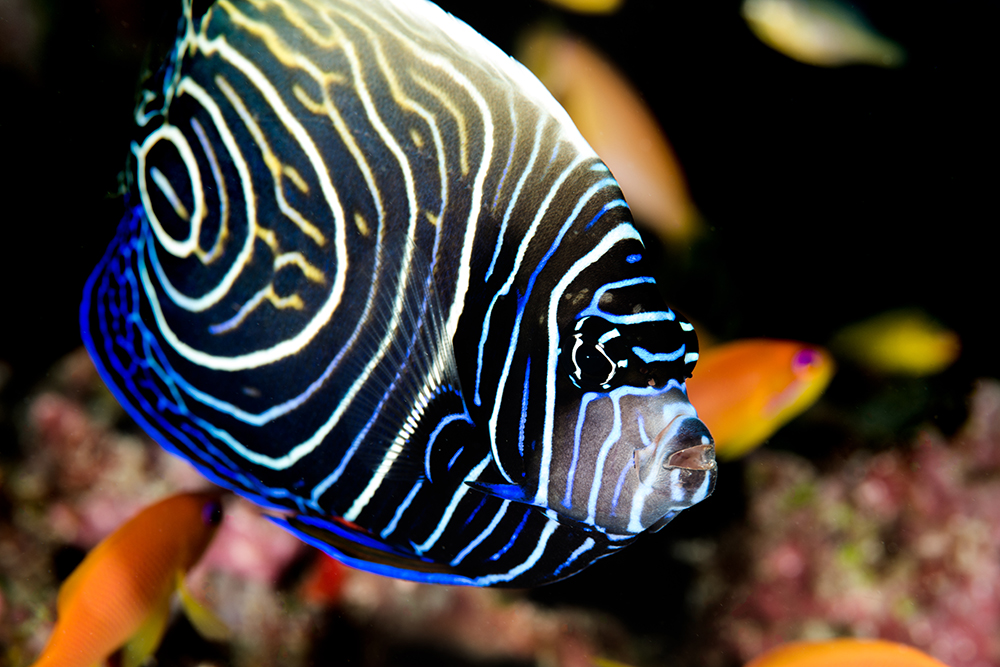

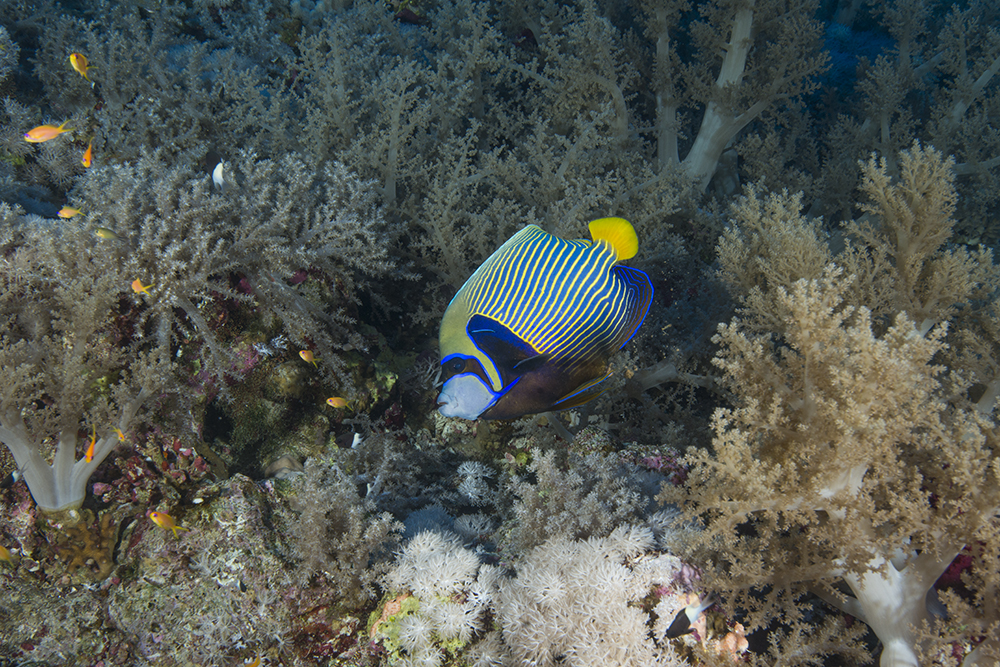









0 Comments